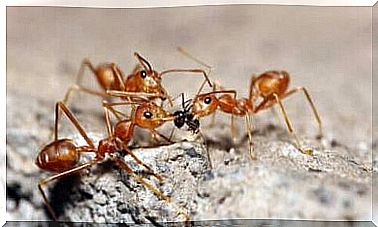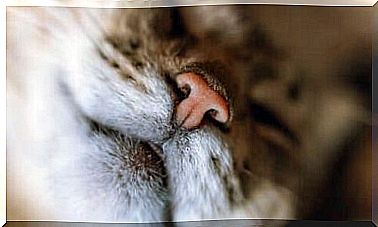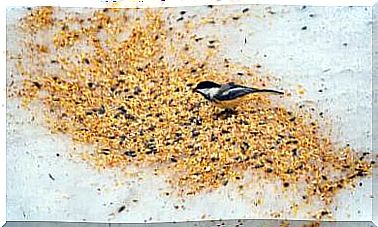Tawny Frogmouth: Everything You Need To Know
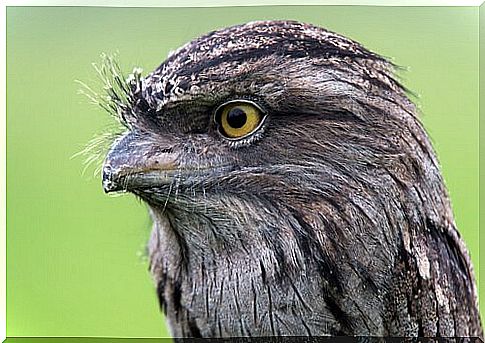
The tawny frogmouth may look like an owl at first glance, but it’s a completely different type of bird. It lives across Australia and in every type of habitat. Its beak is made to catch insects such as cicadas and beetles. It also feeds on small rodents or frogs occasionally.
Unlike the owl, the tawny frogmouth is a bad flyer. This species waits in silence until the prey approaches, launches itself at it and returns to its position. It loves to land on trees with thick, dark bark because it can become practically invisible there.
Tawny frogmouth morphology
The tawny frogmouth’s plumage color is silvery grey, slightly paler underneath and flecked with black. There is also another species, with reddish plumage. The eye is yellow in both and the beak is olive gray or darker.
Birds in the southeast are larger than those in the north and can measure between 40 and 50 centimeters in length. The tawny frogmouth is a nocturnal bird. During the day, it lands on branches and camouflages itself as part of the tree. They usually communicate with a smooth, deep, continuous sound. They also make a loud sound when they feel threatened.
This species has a wide and flat beak, unlike the owl, which is narrow and more curved. The tawny frogmouth’s claws are weak and not curved. In winter, it reduces its diet so much that it spends most of the days and nights in lethargy.
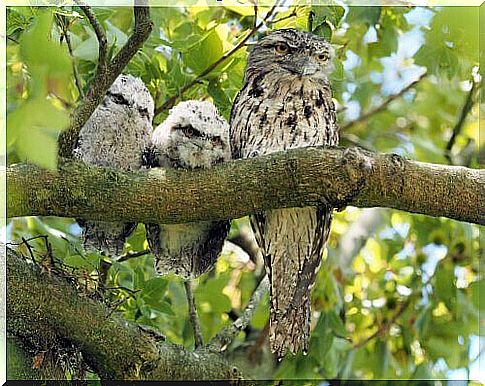
They go into a stupor, a state similar to hibernation in which their heart rate and metabolism significantly decrease to store energy. On colder days, especially autumn and winter, choose a sunny side on the north side of the tree. In summer, they usually choose a location facing south.
reproduction and behavior
The tawny frogmouth has a regular breeding season, but birds in more arid areas can breed in response to heavy rains. This bird chooses a companion for life. The couple usually lay eggs together and sit on them, keeping them warm until they hatch.
The nest is a loose platform of sticks, on which a tree branch is usually placed horizontally. The dusk is one of the best times to observe them and, during the autumn, it will be easier to see them, because they will be occupied with the immeasurable ingestion of insects, before they start to hibernate.
During the day, its beautifully designed feathers join the bark of the tree, making this animal very difficult to detect. The tawny frogmouth’s feathers aren’t its only unusual feature. Its large and wide beak gives it the name of frogmouth, from the English mouth of a toad.
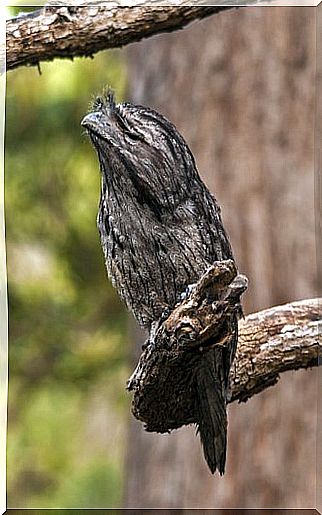
These birds love to catch insects unprepared in the air at night. They also eat aloe and snails, and even small mammals like mice. It’s quite an animal to have on your land because, while you sleep, it’s busy keeping those bugs that bother you out of your yard.
Tawny frogmouth: masters of camouflage
To avoid detection during the day, he sits in an upright position, completely still, in the branches of trees. Head is tilted up and eyes closed. In this posture, it is seen as a broken branch.
If the frogmouth feels scared, it raises its head in the air and closes its eyes. Anyone who sees it will think it’s a tree branch. With his eyes closed, he hopes the scary being can’t see him and walks away.
This bird, if disturbed, can have a threatening posture. It ruffles its feathers, reveals its large orange eyes, and opens its beak to reveal its yellow throat. This in the hope of looking intimidating.
Even though it is known as the bird with one of the deadliest looks in Australia, the tawny frogmouth is one of the country’s most beloved species.
